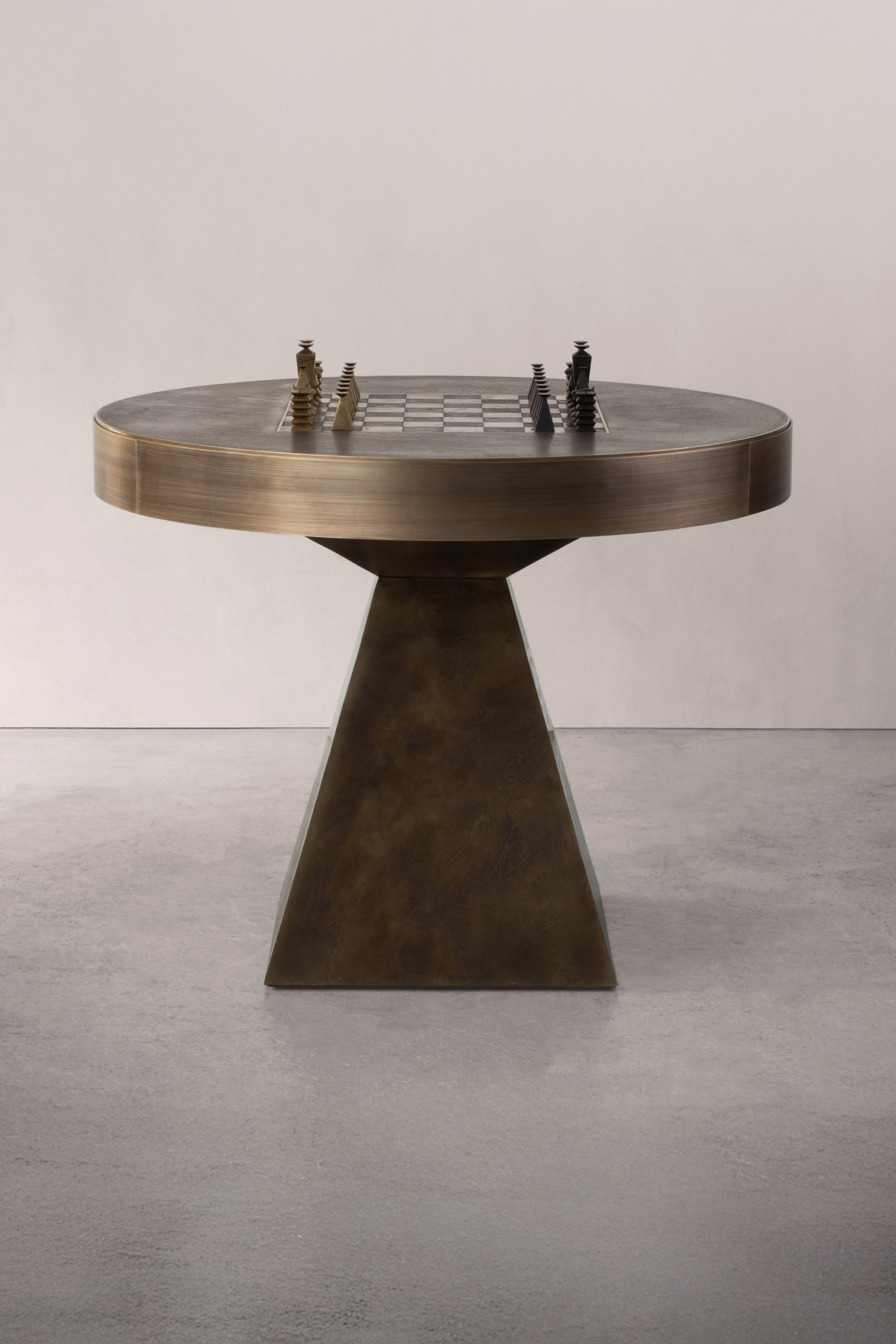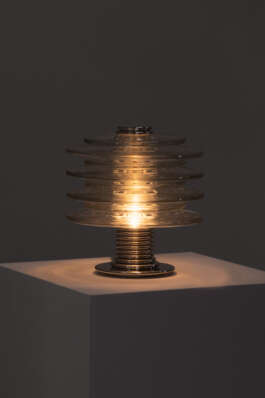



©Richy Almond
COLLECTIBLE In-Depth
Novocastrian
August 2025
This series, COLLECTIBLE In-Depth, unveils the backstage of contemporary creation. Tackling various topics from personal designer processes to the position of collectible design on the global design market, COLLECTIBLE In-Depth offers different views to suit all tastes. Today we speak with Novocastrian.
COLLECTIBLE: What role does storytelling play in enhancing the value and appreciation of collectible design objects within a collector’s portfolio?
Novocastrian: Storytelling adds richness. It connects a piece to a time, a place, and a way of life. For us, this is about connecting our work to the industrial heritage of North East England. When a collector understands how and why something gets made, the meaning shifts. It goes from something material and formal, and becomes something to live with and pass down. A piece gains weight when we understand its story.
C: Can you discuss a specific cultural or historical reference that has inspired your recent work in collectible design?
N: Our work is deeply rooted in the industrial heritage of North East England. The shipbuilding industry along the River Tyne goes back to the 13th century; by the early 20th century, the region was building half of the world's ships. For many of us, that history is personal and it takes just a generation or two to trace our roots to a shipbuilder or coal miner. It is a history of skill and pride in making things - and it's the foundation of everything we do.
One example is the Hewer Mirror, which we’ll present in New York. Named for the coalface workers who shaped the region, it is framed in hand-sculpted brass, each mark a deliberate echo of their labour and determination. Pieces such as these articulate historical significance while also allowing for contemporary design.
C: How do collaborations with artisans or craftspeople influence the final outcome of your collectible design pieces?
N: Our work begins and ends in our North East England workshop, where a close-knit team of metalworkers, designers and fabricators collaborate daily. The process is hands-on and iterative, shaped as much by making as by design intent. Ideas are refined through conversation, trial and adjustment on the workshop floor. When we work with materials beyond our expertise such as the rare British marbles used to create our Hagstone Table Collection, we collaborate with local stonemen who have the same values as us. Their craftsmanship is woven into the story and into the final piece.
C: What makes design collectible in your eyes?
N: To us, design is collectible if it carries meaning. When an item speaks of a place, of history, and the skilled hands that made it, it becomes more than a piece of furniture or lighting. It becomes part of a story. When the story speaks to the maker and the buyer, when both see value in its craftsmanship and personality, then it is worth collecting.
C: What ethical considerations guide your material choices and sourcing practices in the production of collectible design pieces?
N: We work primarily with metal, a material tied to our region and history. Much of our brass and steel is sourced from within the UK, and we aim to work with suppliers who share our values. We make everything to order, which keeps waste to a minimum and ensures every piece has a purpose before it’s made. We prioritise longevity and integrity, creating work that lasts in both form and relevance.
C: How do you navigate the tension between innovation and tradition in your approach to designing collectible objects?
N: We are grounded in tradition but not restricted by it. Our workshop blends time-honoured techniques like welding and hand-finishing with modern methods like CNC machining. It’s a constant dialogue. The past teaches us patience, discipline, and respect for materials. Innovation pushes us to question and refine. We don’t see it as tension, but as balance, honouring where we come from while asking how far we can go with the skills we’ve inherited.

©Otterburn Chess Table

© Insulator Table Light

©Richy Almond
COLLECTIBLE In-Depth
Novocastrian
August 2025
This series, COLLECTIBLE In-Depth, unveils the backstage of contemporary creation. Tackling various topics from personal designer processes to the position of collectible design on the global design market, COLLECTIBLE In-Depth offers different views to suit all tastes. Today we speak with Novocastrian.
COLLECTIBLE: What role does storytelling play in enhancing the value and appreciation of collectible design objects within a collector’s portfolio?
Novocastrian: Storytelling adds richness. It connects a piece to a time, a place, and a way of life. For us, this is about connecting our work to the industrial heritage of North East England. When a collector understands how and why something gets made, the meaning shifts. It goes from something material and formal, and becomes something to live with and pass down. A piece gains weight when we understand its story.
C: Can you discuss a specific cultural or historical reference that has inspired your recent work in collectible design?
N: Our work is deeply rooted in the industrial heritage of North East England. The shipbuilding industry along the River Tyne goes back to the 13th century; by the early 20th century, the region was building half of the world's ships. For many of us, that history is personal and it takes just a generation or two to trace our roots to a shipbuilder or coal miner. It is a history of skill and pride in making things - and it's the foundation of everything we do.
One example is the Hewer Mirror, which we’ll present in New York. Named for the coalface workers who shaped the region, it is framed in hand-sculpted brass, each mark a deliberate echo of their labour and determination. Pieces such as these articulate historical significance while also allowing for contemporary design.
C: How do collaborations with artisans or craftspeople influence the final outcome of your collectible design pieces?
N: Our work begins and ends in our North East England workshop, where a close-knit team of metalworkers, designers and fabricators collaborate daily. The process is hands-on and iterative, shaped as much by making as by design intent. Ideas are refined through conversation, trial and adjustment on the workshop floor. When we work with materials beyond our expertise such as the rare British marbles used to create our Hagstone Table Collection, we collaborate with local stonemen who have the same values as us. Their craftsmanship is woven into the story and into the final piece.
C: What makes design collectible in your eyes?
N: To us, design is collectible if it carries meaning. When an item speaks of a place, of history, and the skilled hands that made it, it becomes more than a piece of furniture or lighting. It becomes part of a story. When the story speaks to the maker and the buyer, when both see value in its craftsmanship and personality, then it is worth collecting.
C: What ethical considerations guide your material choices and sourcing practices in the production of collectible design pieces?
N: We work primarily with metal, a material tied to our region and history. Much of our brass and steel is sourced from within the UK, and we aim to work with suppliers who share our values. We make everything to order, which keeps waste to a minimum and ensures every piece has a purpose before it’s made. We prioritise longevity and integrity, creating work that lasts in both form and relevance.
C: How do you navigate the tension between innovation and tradition in your approach to designing collectible objects?
N: We are grounded in tradition but not restricted by it. Our workshop blends time-honoured techniques like welding and hand-finishing with modern methods like CNC machining. It’s a constant dialogue. The past teaches us patience, discipline, and respect for materials. Innovation pushes us to question and refine. We don’t see it as tension, but as balance, honouring where we come from while asking how far we can go with the skills we’ve inherited.

©Otterburn Chess Table

© Insulator Table Light
Contact
info@collectible.design
VIP PORTAL
EXHIBITOR PORTAL
PRIVACY POLICY
© 2025 Collectible
Contact
info@collectible.design
VIP PORTAL
EXHIBITOR PORTAL
PRIVACY POLICY
© 2025 Collectible